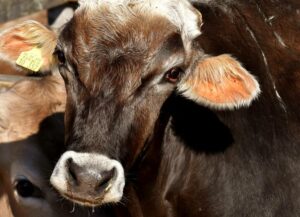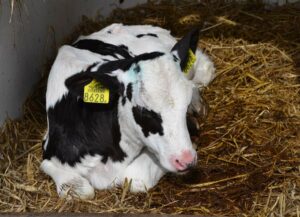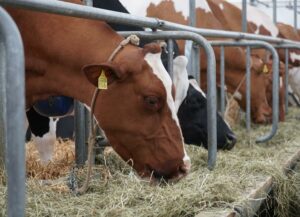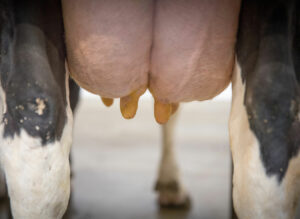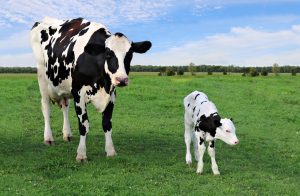Joaquin Ventura & Fernando Diaz
Calcium is a fundamental mineral for the proper functioning of the body. It has multiple functions, from structural in bones and teeth, to its participation in the transmission of nerve impulses, through its role in muscle contraction, blood clotting, the transport of various elements through cell membranes as well as many others.
This gives an idea of the number of disorders that can be triggered when calcium deviates from normal concentrations. A well-known example of the problems of below-optimal calcium concentrations in cows is post-calving hypocalcemia, it is however not the only potential health issue.
Arévalo (2017) listed various problems highlighted in the literature caused by hypocalcemia: prolonged calving, increased inseminations per conception, increased euthanasia, contribution to uterine infections, decreased rumen and abomasum contractions or favoring the appearance of left displaced abomasum, among other problems.
Factors associated with serum calcium concentration
A paper published in Livestock Science (Gobikrushanth et al., 2020) analyzed the factors associated with serum calcium concentration and their relationship to serum metabolites, incidence of health disorders and productive and reproductive outcomes in dairy cows.
The authors recorded serum concentrations of macro minerals, metabolites, liver enzymes, beta hydroxybutyrate (BHB), non-esterified fatty acids (NEFA) and haptoglobin on days 1 and 7 in a total of 398 Holstein cows from 11 dairy farms in Alberta, Canada.
Depending on their calcium concentrations, cows were classified in two groups: low concentration (2.10 mmol/L; n = 136) or high concentration (> 2.10 mmol/L; n = 262).
The main findings were:
- Cows in the low Ca concentration group had also lower serum concentrations of magnesium, sodium, potassium, albumins, globulins, total proteins and cholesterol, while those of urea, aspartate aminotransferase, BHB, NEFA and haptoglobin were higher, compared to those recorded in cows in the high calcium group (see table below).
| Low Ca (≤ 2.10 mmol/L) | High Ca (> 2.10 mmol/L) | |
|---|---|---|
| Magnesium (mmol/L) | 0.80 | 0.85 |
| Sodium (mmol/L) | 140.2 | 142.0 |
| Potasium (mmol/L) | 4.60 | 4.71 |
| Albumins (g/L) | 29.7 | 32.6 |
| Globulins (g/L) | 29.9 | 31.9 |
| Total proteins (g/L) | 59.6 | 64.5 |
| Cholesterol (mmol/L) | 1.8 | 2.1 |
| Urea (mmol/L) | 4.1 | 3.8 |
| Aspartate Aminot. (U/L) | 107.8 | 86.9 |
| BHB (mmol/L) | 875.2 | 635.1 |
| NEFA (mmol/L) | 0.83 | 0.63 |
| Haptoglobine (g/L) | 1.4 | 0.9 |
Table 1. Average post-calving serum concentrations in dairy cows.
- Cows with low calcium had a greater incidence of health problems compared to those with high calcium (80 vs. 55 sick animals) during the first 90 days of lactation. In addition, there was a need to euthanize more animals (11 vs. 2).
- By pathologies, retained placentas, metritis and ketosis were significantly more common in cows with low than with high calcium (18 vs. 4, 33 vs. 11, and 27 vs. 9, respectively).
- Cows with low calcium produced less milk during the first 25 days of lactation compared to cows with high concentration (714 kg vs. 794 kg).
- The proportion of cycling cows within 35 days of lactation and pregnant at first artificial insemination tended to be lower for low calcium cows (56 vs. 67 and 31 vs. 43).
In conclusion, cows showing calcium concentrations equal to or less than 2.10 mmol/L had lower serum concentrations of other macro minerals, higher concentrations of markers for fat mobilization and inflammation, higher incidence of postpartum health disorders, and worse reproductive outcomes compared to those in the group with a serum concentration greater than 2.10 mmol/L.
References
Arévalo Rodríguez IKC. Niveles de calcio sérico y su relación con la presentación de endometritis post puerperal diagnosticada con Metricheck® en vacas lecheras de crianza intensiva de Lima [tesis doctoral]. Universidad Nacional Mayor de San Marcos (Lima, Perú). 2017.
M. Gobikrushanth, K. Macmillan, A. Behrouzi, I. López-Helguera, B. Hoff, M.G. Colazo. Circulating Ca and its relationship with serum minerals, metabolic and nutritional profiles, health disorders, and productive and reproductive outcomes in dairy cows. Livestock Science 233 (2020), 103946.
© 2020 Dairy Knowledge Center. All Rights Reserved.


